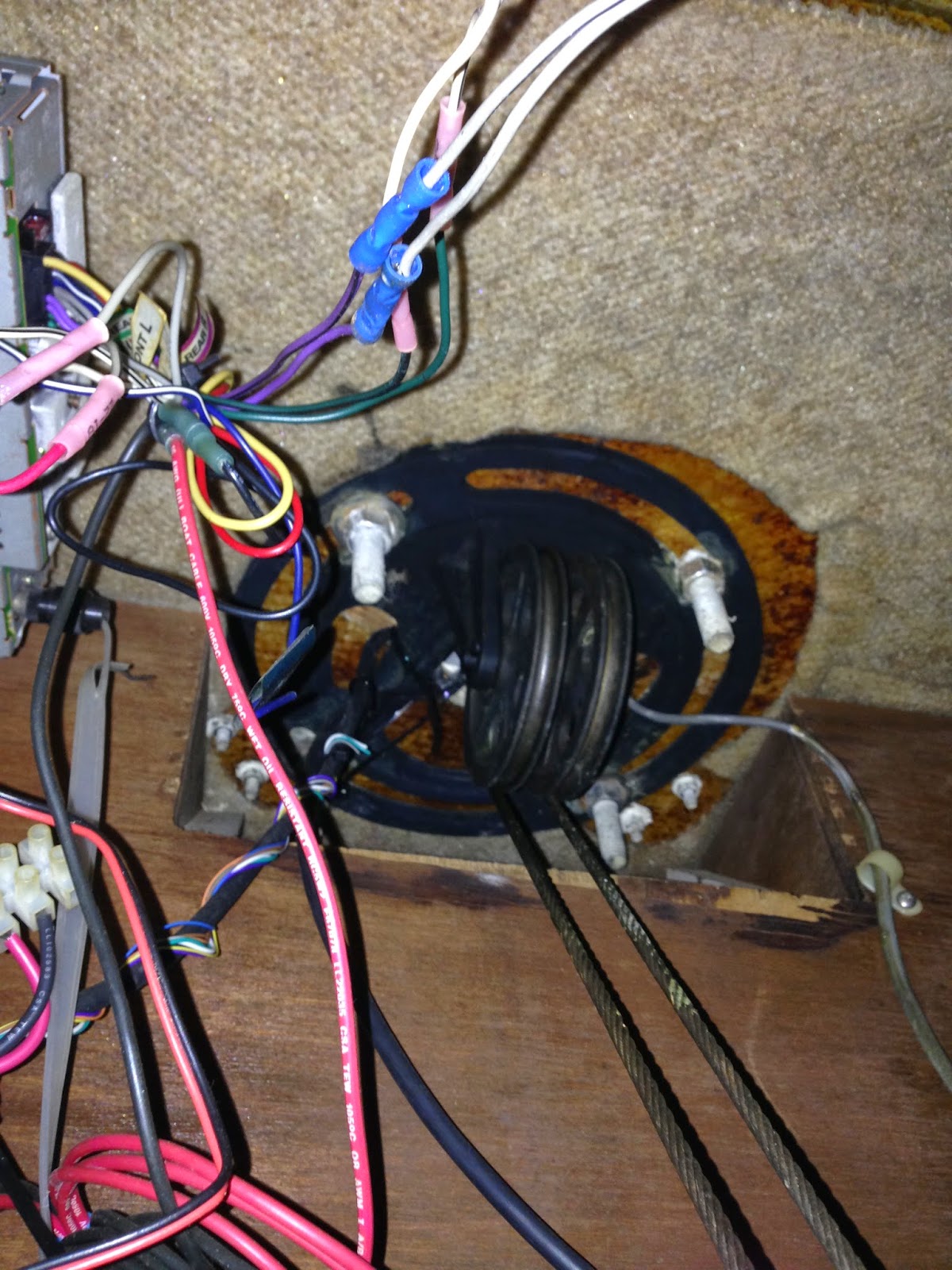But that's hard to do when you have to keep a hand on the helm while standing under the bimini.
To maximize time with the sheets, cunningham, outhaul, vang, and all the other bits and bobs that control sail shape, an autopilot is ideal. The problem is that I no longer have one.
As I mentioned in the last blog, my boat came with an old WP-100 by Navico. The WP stands for wheel pilot, which means the unit attaches to the helm's wheel and applies force there, as opposed to the rudder quadrant. Unfortunately, my old autopilot was poorly installed and there were loads put on it that it wasn't designed for. The internal components shattered under the twisting loads. Because they don't make the WP 100 anymore, I couldn't find parts to fix it.
So, we bought a Raymarine EV-100 system, with a wheel pilot instead of a mechanical or hydraulic drive unit on the rudder quadrant. The boat has about 9,500 pounds of displacement, so a wheel pilot should work well if I keep the sails balanced. It puts out about 30nm or 22 foot pounds of torque, which ought to do it.
The mechanical drive unit might be better, but the boat has never had one of those and I'm not sure how much modification will be required to install one for the first time. The good news is that the Raymarine EV-100 is modular. Someday, if we decide to upgrade it, it shouldn't be a problem to add a mechanical drive.
Anyway, due to a late arriving trailer at UPS, my plan to get the autopilot installed this weekend was a bust. But, having been an auto and aircraft mechanic in a past life, I know that planning is half the battle on something like this, so I planned out what I was going to do instead. The web is great for this because I can download manuals and stuff to have a look before the box arrives.
The S2 9.2c has a lot of space under the cockpit thanks the the center cockpit design, so there's room for the parts. Good thing, too, because there are Seatalk cables, a software unit, and a nine (!) axis sensor to find homes for, not to mention the display for the cockpit. I checked it all out and decided I can probably run the cables for the control head up the inside of the binnacle.
There are already wires there for the Garmin 536s GPS/Sonar, as you can see from this shot of the underside of the cockpit, but those wires aren't protected from the helm cables by a conduit or the like:
 |
| Helm Cables, GPS wiring, and Binnacle Light Wiring Below Cockpit |
Speaking of the helm cables, those have been bugging me. The cables that run from the helm to the rudder have a lot of slack, which has led to a sloppy feel in the helm. I decided to tighten that up, which I hope will limit the shock to the new autopilot caused by the forces that can bash the rudder back and forth under way.
There's no information on the cable tension needed, so I just got the slack out until the rudder quadrant wouldn't move at all with the helm wheel locked in place. That solution was pretty popular at most of the websites I checked. Then I made sure the wheel was still easy to turn and not binding. The cables are far from piano-wire tight, so I think it's right. The extra give, which doesn't seem to be adding to a sloppy helm feel, won't put excessive strain on the pulleys or quadrant. The wind and waves do enough of that.
While I was there, I checked for rudder post leaks and any problems with the cables. I used to install replace control cables in DC-9 and 727 aircraft, so I'm familiar with what good ones look like. Mine seem fine and didn't grab a towel I ran along the exposed areas. If they grabbed, it would have been a sign that some individual strands had failed and the cables needed to be replaced.
Here's what the rudder quadrant looks like under the aft berth:
 |
| Edson Rudder Quadrant, Top Down View - Cables Run Forward |
No comments:
Post a Comment